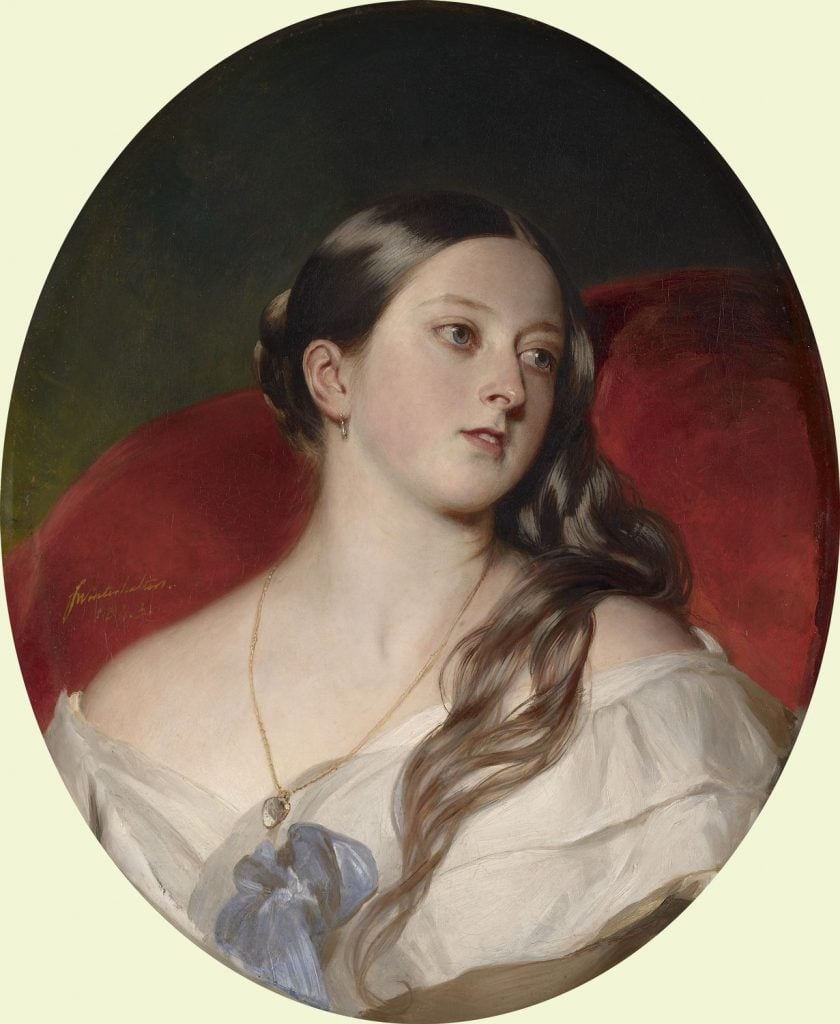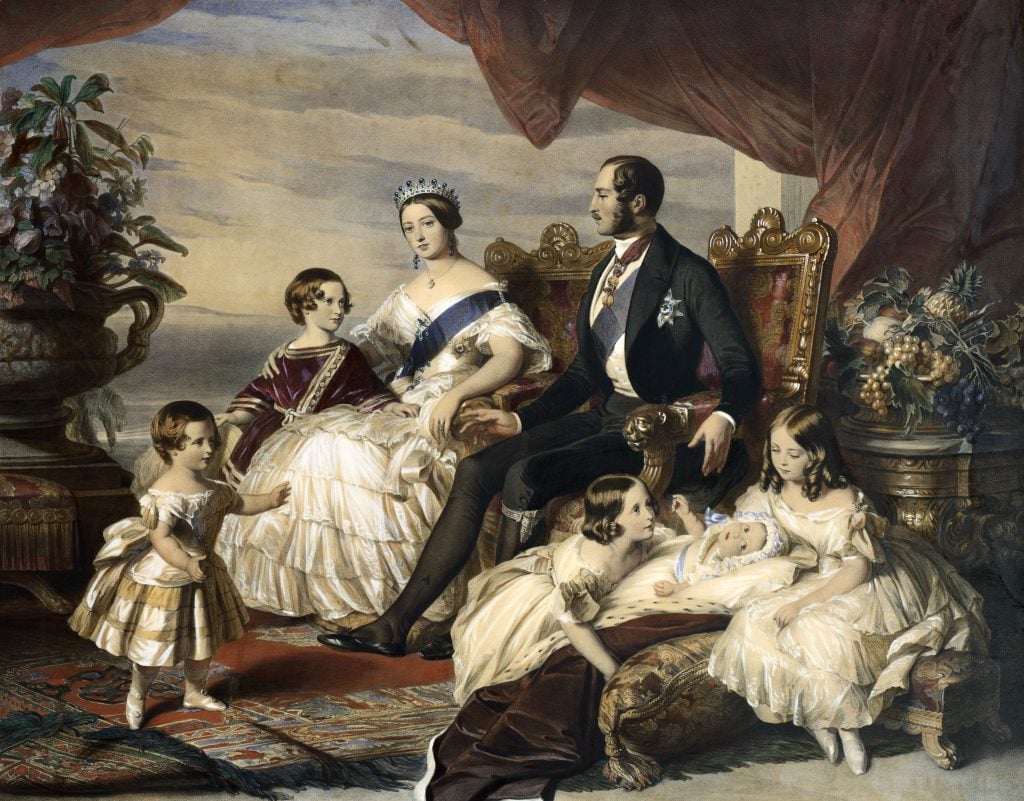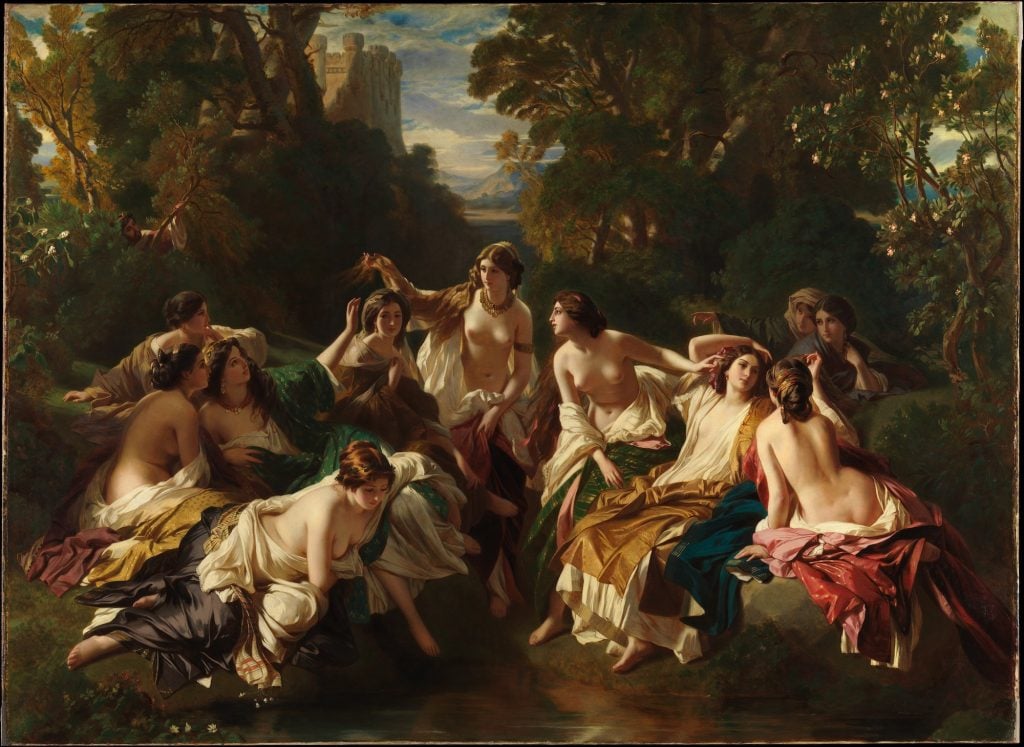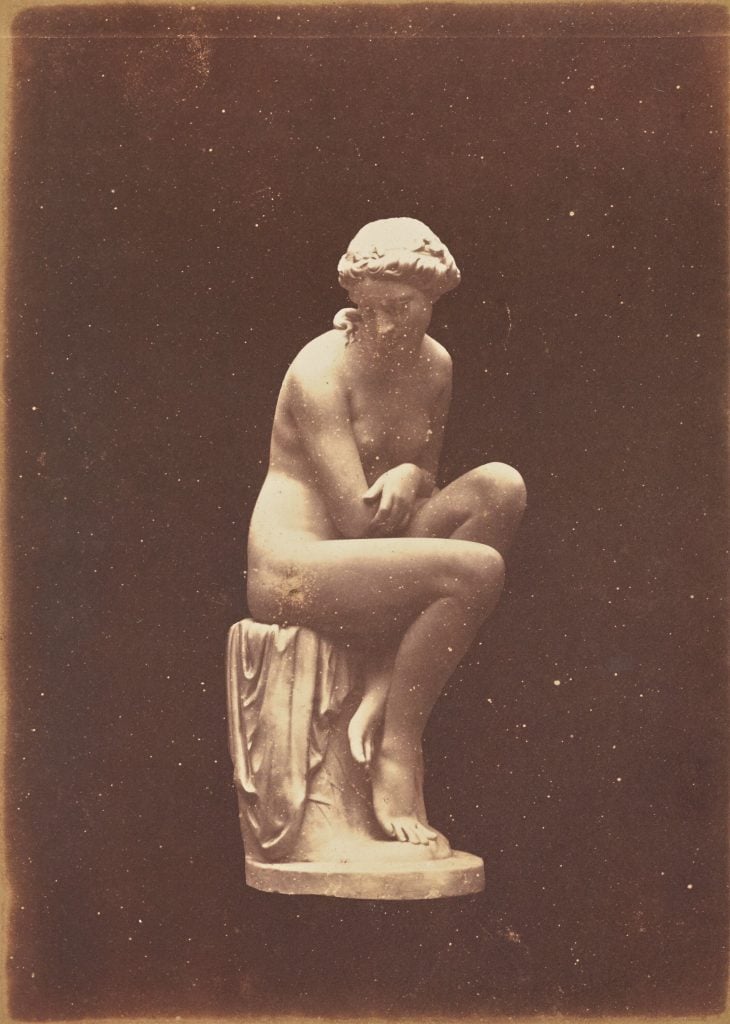Art World
Art Bites: The Story Behind This Queen Victoria Thirst Trap
The queen's "secret picture" was a present for Prince Albert's 24th birthday.

If you’re in need of describing a prudish person with antiquated ideas, Victorian makes for a handy moniker. Its namesake queen embodied the term—a woman of virtuous morality whose enduring image is that of a stern face forever dressed in the heavy drapery of mourning.
This austere reputation, however, is vastly overstated. Two factors played a role; the monarch’s function shifting to that of a symbolic figurehead and the premature death of her husband Prince Albert at the age of 42. It had been, after all, a marriage of passion and deep affection. Queen Victoria wrote the experience of loss sent her into “paroxysms of despair,” landing her with a sadness that never truly departed.

Franz Xaver Winterhalter, Queen Victoria and Prince Albert with Five of Their Children (1846). Photo: © Historical Picture Archive/CORBIS/Corbis via Getty Images.
Victoria and Albert were first cousins, introduced in 1836 by their uncle Leopold, King of the Belgians. It was, sigh, love at first sight. Tradition decreed no one could propose to a reigning monarch and so on their second meeting at Windsor in 1839, Victoria popped the question.
For proof that Queen Victoria’s buttoned-up reputation is exaggerated look no further than the gifts she provided Prince Albert (not counting the nine children).
In 1852, she bought him Florinda, a large painting by Franz Xaver Winterhalter that depicts a group of semi-naked women lounging around a pool. It’s a legend from the life of Roderick, the 8th century Visigoth King, with the ruler crouched in the bushes, ogling his maids of honor. Following its showing at the Salon of 1853, Victoria had it placed facing their writing desks in the sitting room of Osborne House, the couple’s seaside retreat on the Isle of Wight.

Franz Xaver Winterhalter, Florinda (1853). Photo: the Met.
Two years later, she gifted him The Bather by John Lawlor, a white marble statuette of a young woman who sits nude and gazing pensively into the waters below. Hardly prim and proper. If anything, Albert was the more conservative of the two. At one point, he commissioned a sculpture of himself posing as a Greek warrior. It’s a confident and virile image, the Prince with bare legs and feet, his left hand resting upon his sword. Victoria thought it “very beautiful.” Albert had second thoughts and hid the sculpture before commissioning a second, more modest, version.

The Bather, a statue by John Lawlor. Photo: Nikolaas Henneman and Thomas Malone/Getty Museum.
But it’s Victoria’s so-called “secret picture” that best undermines the calcified stoicism for which she became synonymous. Again, Winterhalter is the artist. The German arrived at the English court in 1842 via the recommendation of Louise, Queen of the Belgians, and painted the royal family extensively.
Unlike the grand official portraits full of pomp, posing, and priceless regalia, the 1843 painting is quiet, intimate, and intended for an audience of one. It was commissioned as a surprise for her husband’s 24th birthday. Victoria lazes against red cushioning, her clothes are simple, her shoulders bare, her hair as disheveled as is possible for a queen. Her gaze wanders into the distance her thoughts, one assumes, resting with her husband.
It hanged in Albert’s private writing room at Windsor and was, naturally, his favorite painting.
What’s the deal with Leonardo’s harpsichord-viola? Why were Impressionists obsessed with the color purple? Art Bites brings you a surprising fact, lesser-known anecdote, or curious event from art history.





